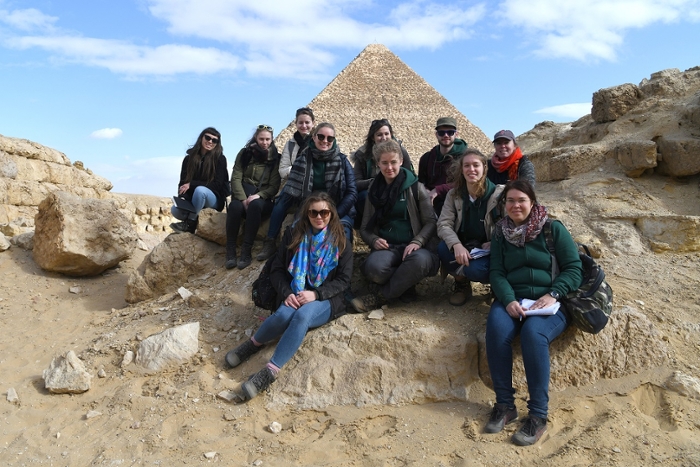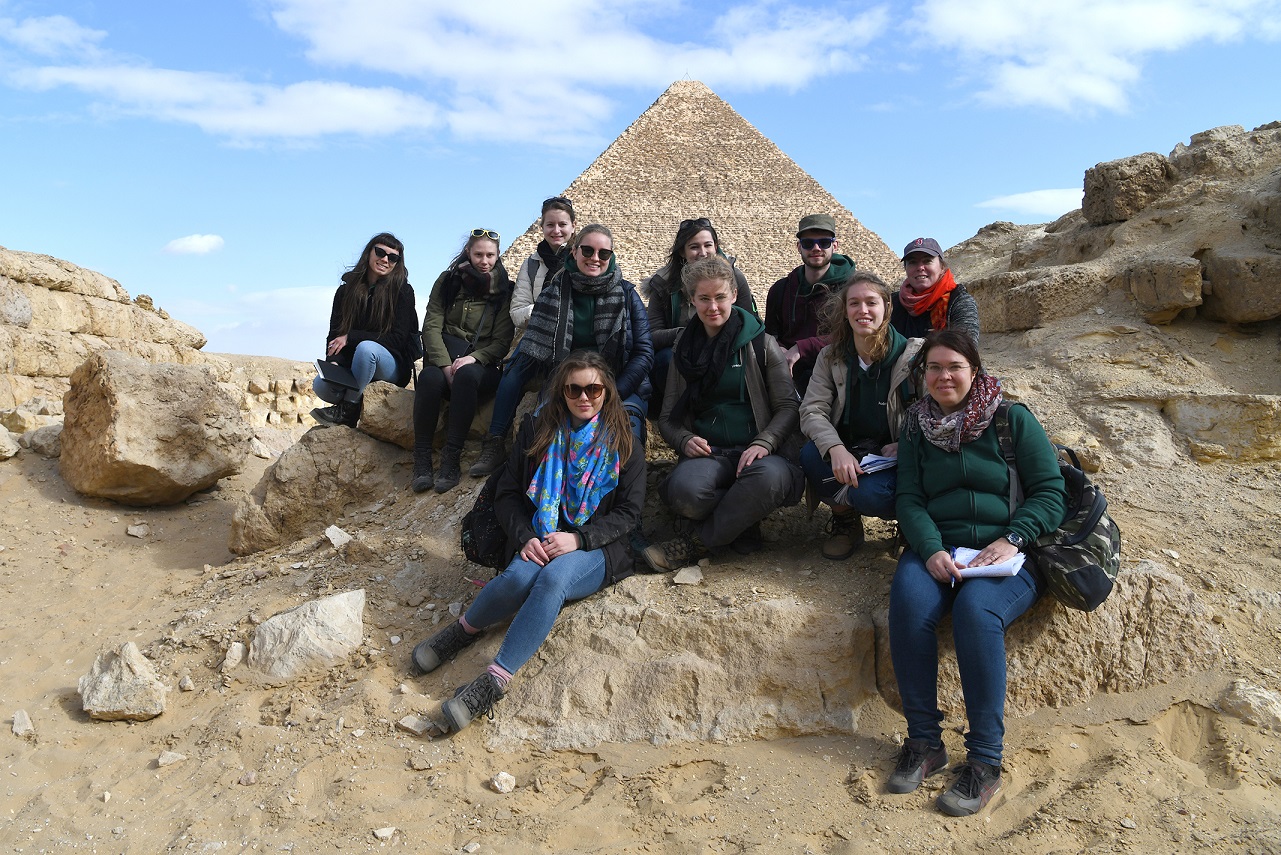Week 1: 6-12 January 2019
The first week of the Cairo semester got off to a flying start. After some introductory sessions at the NVIC, we all got into a minibus for a drive around Cairo. With Marleen as our guide, we saw several neighbourhoods and monuments. We even went to the Muqattam cliffs for a panoramic view over the city. The weather wasn’t with us however, as it was extremely foggy and we couldn’t see a thing, ma’alesh! We also paid a visit to the Hindu style palace of baron Empain in Heliopolis, which is currently undergoing restoration. Later we ended the first day with a taste of traditional cuisine at Abou el-Sid, where we enjoyed many famous Egyptian dishes like taameya, tahini, rabbit with molokheya, pigeon stuffed with friq, and off course some Umm Ali for dessert.
Because Monday was Coptic Christmas and the institute would be closed, we went straight to Giza. Most of us had never seen the pyramids, and we were truly impressed with the enormous scale of these edifices. But of course Giza is so much more than just pyramids! After a general introduction, Marleen expertly guided us through the rows of mastabas of the Eastern Cemetery, to show us the changes in their construction and decoration during the Old Kingdom. We had a brief pick-nick in the shadow of a mastaba, and then continued our explorations in the Solar Bark Museum, and the Western Cemetery. There we took the official group picture in the same spot as generations of students had done before us. Unfortunately it was too cold and windy to properly show off our matching Cairo semester hoodies, but I’m certain we’ll get another chance for that as the weather warms up. Our assignment for the afternoon was to find the exact spot where an excavation photo from the early 20th century was taken. This proved to be quite the challenge, as sands and blocks of stone have moved since. But most of us still had some time left before the plateau closed, so we climbed up into the burial chamber of Khufu, and went down to the valley temple of Khafra to see the Sphinx. Famous definitely doesn’t mean overrated in the case of Giza.

The following day we had our first Arabic lesson, after which we took a taxi to the Egyptian Museum. There we were introduced by Marwa to the digital database, a useful tool when researching objects in the museum. We had a brief introduction about the museum at the tomb of Mariette, which was interrupted by Egyptian television to interview Marleen. Afterwards we got the chance to explore the museum, and to search for the 10 objects we each have to find for our museum assignment. This is not as easy as it sounds, as every corner in the museum is cramped full of artefacts, and several lack labels. Back at the NVIC Marleen told us what she expects in our final papers, and we got some information about our upcoming trip to Ayn Sukhna. At the end of the day we all went to a lecture by Aidan Dodson at the EES about king Sethi I, who proved to be an interesting figure.
After our second Arabic class on Wednesday, we went to see the Swiss institute. From the Art Deco interior to the prime location on the bank of the Nile, its founder Ludwig Borchardt had good taste. Afterwards we walked across Zamalek to the German institute (the DAIK), where librarian Isolde Lehnert treated us to an extensive explanation about the institute’s history, and its impressive collection of books. We all got a library card there, as it will be our main source of books for writing our papers.

Thursday morning we again had Arabic class before we went to the BAE/ISAAE conference. This four-day conference on ancient human, animal and plant remains was held in the beautiful Ewart Hall at the American University in Cairo. The next few days our schedule was completely filled with presentations about (animal) mummies, ancient pathologies and animal iconography. Sadly there were only a few papers on archaeobotanical remains. We also got to attend the official opening of the first exhibition on human remains at the Egyptian Museum on Tahrir. Even though many famous scientists presented at the conference, the show was often stolen by a cat. The cheeky creature didn’t hesitate to claim our laps for her nap, or distract the speaker by taking a stroll around stage. As Salima Ikram said: the goddess Bastet decided to grace us.
Veerle Van Kersen


